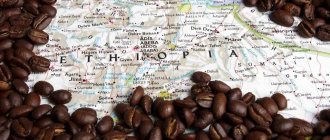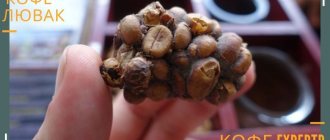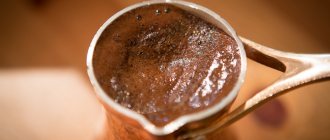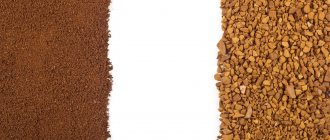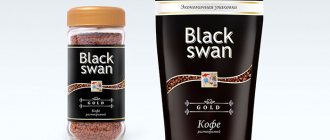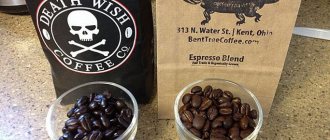Colombian coffee has gained worldwide fame. But it has been produced in this country relatively recently - only two centuries. Coffee was first brought here in the first half of the 18th century: in 1723 to the department of Santander, in 1738 to Cauque, in 1758 to the Sierra Nevada, and in 1761 to Panama.
Since 1810, coffee began to be grown for sale, and since 1835 - for export. In 1857, there was a significant expansion of Colombian coffee plantations. This was facilitated by the fact that in the middle of the last century, coffee production in Cuba and other islands of the Caribbean region sharply decreased.
Today Colombia is one of the giants of coffee production. It accounts for about 15% of the world's coffee volume. Coffee is Colombia's main crop, covering 4.5 million hectares of land. And although the country is inferior to Brazil in terms of volume of coffee harvested, it still has no equal in production and export of the highest quality Arabica coffee (“soft”/“washed”).
Mountainous terrain with valleys provides a variety of microclimates in different areas, which is very important, since the harvesting season can last a very long time due to discrepancies in ripening periods. Since Colombia is located on the equator, the average monthly temperature here is very high - 28-30°C. Naturally, the country does not experience frosts like those in Brazil.
Currently, Colombia has a fairly high coffee yield - on average about 930 kg per hectare.
The coffee growing areas lie at the foot of the Andes, in a temperate and humid climate.
Colombian coffee is divided by quality into the categories Supremo, Extra, Excelso and UGQ (Unusual Good Quality). Most Excelso coffee is exported to Europe, mainly to Germany.
In addition to the first two, there is a category “Unusually good quality” (UNO) - unusual good quality). The “official” difference between them is the size of the beans - Supremo beans are usually larger and more often come to market from well-known producers, while Excelso is much softer with higher acidity. At the same time, both coffees are quite aromatic, have a good bouquet and medium richness. Silky coffee is what Colombian coffee is often called for its balance of flavor.
Today, Colombian coffee is one of the few coffees sold worldwide under its own name. No other coffee is of such high quality as Colombian coffee. There is a steady and high demand for it. Colombia supplies coffee to various parts of the world, as it has access to the Atlantic and Pacific oceans.
Features of Colombian coffee and its taste
Different regions make coffee in their own way; naturally, it is difficult to give a single taste characteristic to all Colombian coffee. However, almost always, in a drink from Colombia you can discern a taste of the tropics, shades of flowers and red berries, slightly sweet notes of chocolate, caramel and sugar cane.
One of the main reasons for the popularity of Colombian coffee on the world market is its special softness: beans of different varieties are carefully blended to create optimal taste and aroma.
The peculiarity of the beans grown in Colombia is that they do not become overly bitter even when intensively roasted. They are usually used to make espresso and cocktails from it.
Cooking technology
To prepare Colombian coffee, you can use the standard brewing method. To do this you will need the following ingredients:
- 150 ml water;
- 10 g freshly ground coffee beans.
Cooking method:
- Coffee beans are ground, poured into the bottom of the turk, slightly heated, and filled with water.
- Bring the liquid to a boil and remove from heat. You only need to heat the coffee once - this way the drink will retain its soft taste.
- This coffee should be served immediately after preparation. Chocolate-covered coffee beans are perfect as a treat.
All varieties of Colombian coffee have a pleasant, subtle taste and expressive aroma. To maintain the quality of the beans at such a high level, the import of robusta into the country is officially prohibited. This limitation eliminates the possibility of disruption to long-term breeding work to create unique varieties.
Historical reference
Coffee cultivation first began in Colombia back in the 17th century.
But it was not until the 19th century that the first commercial plantation appeared. It gave a very small harvest of 2-3 bags per year. Although the product was an export product, Colombian tobacco and rubber were in much greater demand.
And only thanks to one nuance, Colombian coffee managed to take a leading position in the world market. The combination of climatic conditions with the peculiarities of the composition of the local soil makes it possible to grow grains of outstanding taste.
How does where the grain grows affect the taste of coffee?
As a consumer, you'll likely enjoy the fruity notes of Ethiopian coffee, the balanced and sweet flavor of beans from Guatemala, or the earthy tones of Indonesian coffee - but you won't know until you try the drink itself.
As Katherine Gu, green coffee buyer for Latorre & Dutch Coffee, says: “People want different coffees with interesting flavors. Judging the flavor is very valuable.”
Different countries face different difficulties and problems: be it low wages, political instability, or pests of coffee trees. If you are looking for a reliable supplier of good coffee, then first of all you need to know what is happening in the country of production.
As Katherine says, “Where the coffee grows determines almost everything. Therefore, we want to see supplier countries develop for the better, providing the rest of the world with high-quality coffee beans and improving the living conditions of local people.”
Moreover, coffee is a seasonal agricultural product. Some varieties may be more difficult to obtain at certain times of the year. And roasters will not only have to plan supplies, but also find the ideal roast profile for each type of coffee.
John Allen, co-owner of US roaster and small coffee chain Onyx Coffee Lab, says: “We become more successful in the specialty coffee industry as we learn more about the origin and flavor profile of the bean. You know, when a growing region sets a certain standard of “taste” in wide circles, it’s a victory for our industry.”
So, what are the flavor profiles of coffee in different countries and regions?
Plantation Sítio Rancho Dantas Brejetuba, Espírito Santo, in Brazil, owned by Mr. Joselino. Photo by Ivan Petrich.
Secrets of coffee production on Colombian plantations
A large role in shaping the taste of Colombian coffee is played not only by the characteristics of the soil and climate, but also by an interesting combination of modern technologies with the use of manual labor. The efforts of scientists and breeders to improve the taste of grains are no less important than the unique balance of humidity, heat and fertile lands created by nature.
Main differences:
- The location of the plantations is at an altitude of more than 1200 meters above sea level. The trees grow in the shade of taller plants, protecting them from excessive sun.
- Picking berries and sorting grains are done manually.
- Colombian coffee producers know that the taste of the drink depends not only on the variety, but also on the size of the beans, and they offer the buyer various options.
- The National Federation of Manufacturers carefully monitors technology compliance.
- In Colombia, for many centuries, they have been selecting and producing exclusively the Arabica variety, abandoning the cultivation of the more unpretentious Robusta.
- Most of the plantations are family businesses that pass on the traditions of coffee growing from generation to generation. First of all, it is important for them not to damage the honor of the family, and not to receive excess profits.
Be sure to read: Unique properties of coffee for skin rejuvenation
Colombians clean coffee beans only using the wet method. First, debris, leaves and twigs are removed from the fruit, then the skin and pulp. To get rid of the thin parchment film remaining on the grain, the berries are fermented (usually for no longer than a day). After this, the grains are thoroughly washed with water and they become smooth and clean.
This technology is relatively new and is quite expensive compared to the dry method, when the grains are simply dried in the sun. The resulting coffee has a higher quality, rich bouquet and rich fruity taste.
Processing secrets
The entire coffee harvest is harvested exclusively by hand. To get 1 kg of finished product, you will need to collect approximately 5 kg of raw materials. This is the number of berries produced by 1 coffee tree during the year. After the harvest has been harvested, it is processed:
- The berries are sorted and separated from branches and foliage.
- The thinnest layer of pulp is peeled off and the grains are removed.
- The grains are washed under running water and soaked for 12–36 hours.
- The product is dried under diffused sunlight.
- The grains are once again sorted by size and sent to the factory.
- There, Colombian coffee beans are packaged and the product is transferred for export.
This processing method is called wet. Moisture is necessary not only to clean the grains from residual pulp, but also for additional sorting. Fruits that are not fully ripe begin to float. In addition, the primary fermentation of coffee begins in water, revealing the aroma.
Varieties and types of coffee from Colombia
Colombia produces only Arabica coffee. Its three most important varieties are named after the cities of production: Manizales, Armenia and Madellin (there is also a more expensive version - Madellin Supremo).
The varieties are all grown in the central region of the country and are often referred to by the common abbreviation MAM. This coffee bean is distinguished by higher acidity than the varieties grown to the east.
The main varieties of Colombian coffee:
- Buccaramanga is grown among palm trees, which protect it from the sun and soften the taste of the drink. Has pronounced spicy notes.
- Narino is famous for its combination of light taste with a very bright aroma.
- Bogota - this variety is almost devoid of the sourness and bitterness typical of Arabica. The taste is distinguished by tenderness and almond notes.
- Popayan is an unusual product for Colombia with a thick consistency and bitter taste.
- Castillo is another new variety with an amazing balance of bitterness and tenderness. If you add milk to a drink, the bitterness is replaced by a nutty taste.
Each variety is further classified by grain size:
- Usually Good Quality – the smallest grains, up to 5.5 millimeters in size.
- Excelso – medium-sized grains.
- Supremo is the largest coffee bean produced in Colombia.
Be sure to read: Choosing a coffee pot for an induction cooker
The most controversial local variety is Castillo. This Arabica is genetically related to Robusta. The variety has good disease resistance (including leaf rust), but not everyone likes its taste.
Colombia's native Caturra variety is one of the most interesting offerings on the local coffee market. The drink it produces is refreshing and light-bodied.
A popular variety is Tinto - this product has quite decent (although not the highest) quality and taste, and is affordable.
Excelso
Excelso coffee is softer and has more acidity than Supremo. It is obtained by mixing the other two - supremo and extra.
The Excelso variety, which is also made from selected wet-processed Arabica beans, is also worthy of the most flattering reviews. "Excelso" - medium-roasted beans. After careful selection, only the best raw materials are exported, from which coffee is obtained that not only has an excellent aroma and taste, but also combines perfectly with other varieties.
"Excelso" is grown only in the high Andes and has an impeccable reputation among gourmets around the world. The drink turns out to be softer and more acidic, with a pronounced aroma and a hint of prunes. "Excelso" is obtained by mixing two of the highest quality varieties "supremo" and "extra".
Local rules for serving coffee
Colombians prefer coffee that is very sweet and weak. They drink it several times a day, but in small portions, so Colombians almost never experience a caffeine overdose.
The local method of preparing the drink is unusual - it is somewhat reminiscent of cooking dumplings or pasta.
First, boil water in a saucepan, then add coffee to it, stir and leave to boil for a while. Turn it off and let it stand so that the grain particles settle to the bottom. The finished coffee is poured into cups and drunk without filtering. This drink is called Tinto.
During breakfast, Colombians traditionally combine chocolate and vanilla glazed coffee, muffins, cinnamon sweets, carrot cakes and various types of bread (from regular white to pumpkin). Fried toast and pancakes go great with a breakfast drink.
Asiatic
Indian This is a coffee with low acidity, light and burgundy flavor, used mainly in blends.
Hawaiian Coffee is quite bitter in taste.
Sumatran is well known for its delicate acidity.
Vietnamese This is the world's second producer and first Robusta variety.
Yemeni For example, the famous Moka coffee, high quality, tastes like chocolate and is highly prized.
Terroir and climate
Still, why does the taste of your coffee depend on where it is grown? Part of the reason for this lies in environmental conditions – otherwise known as terroir.
Terroir is the combination of natural conditions in which coffee beans grow.
This term is commonly used in the wine industry and is also used by professionals in the coffee industry.
The Galapagos Islands are a great example of the influence of terroir. You probably think that close proximity to the equator and a fairly hot climate are not suitable for growing high quality coffee? Add to this the lack of hills. As is known, at altitudes, lower temperatures allow fruits to grow more slowly and acquire a complex and complex taste.
However, the islands surprise suppliers with their quality coffee - all thanks to the cool sea breezes and the Humboldt Current, which moves north along the western shores of Chile.
Fazenda Bateia Castelo, Espirito Santo, in Brazil. Mr. Valdeir Tomazini processes the coffee in a natural way, drying the beans on the patio. Photo by Ivan Petrich.
